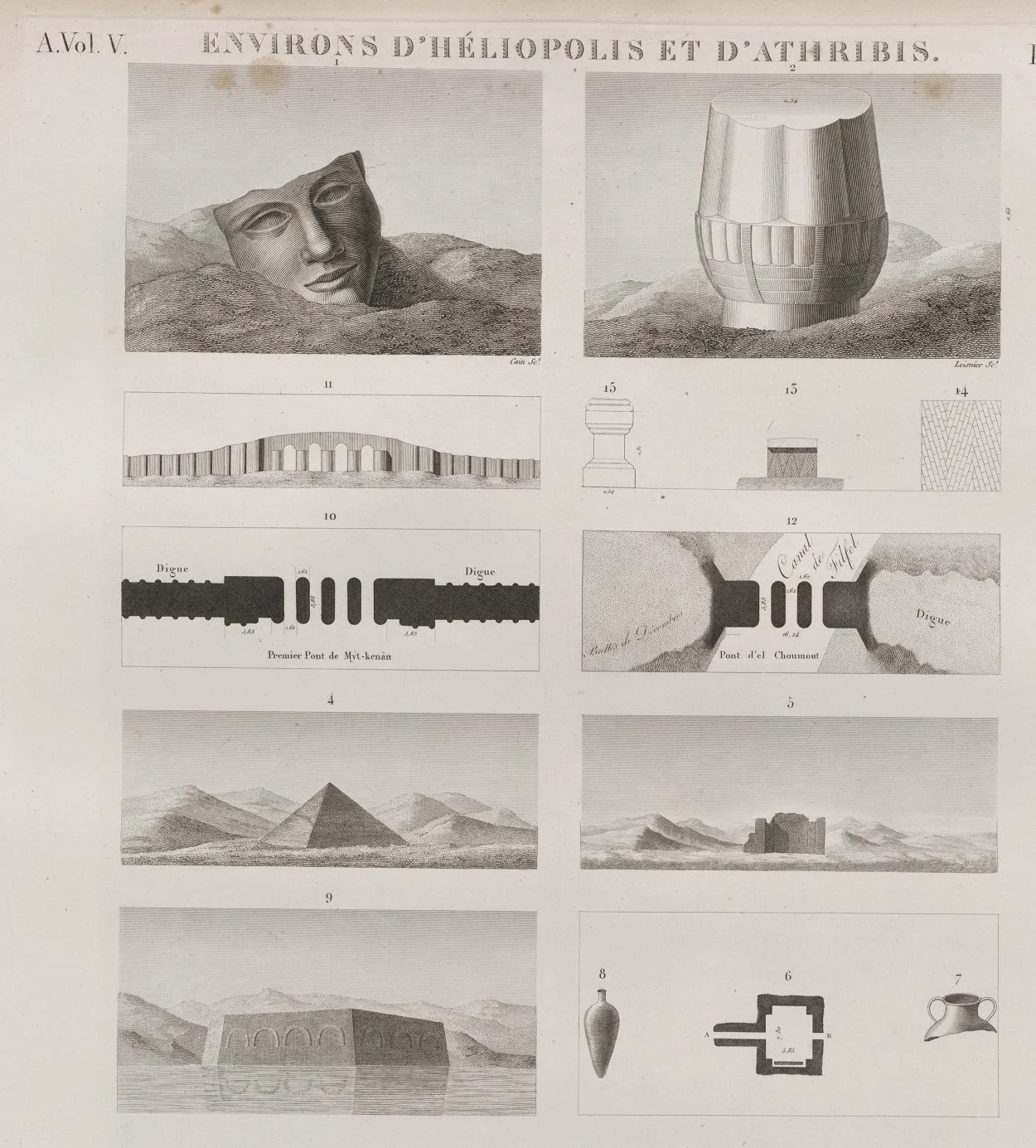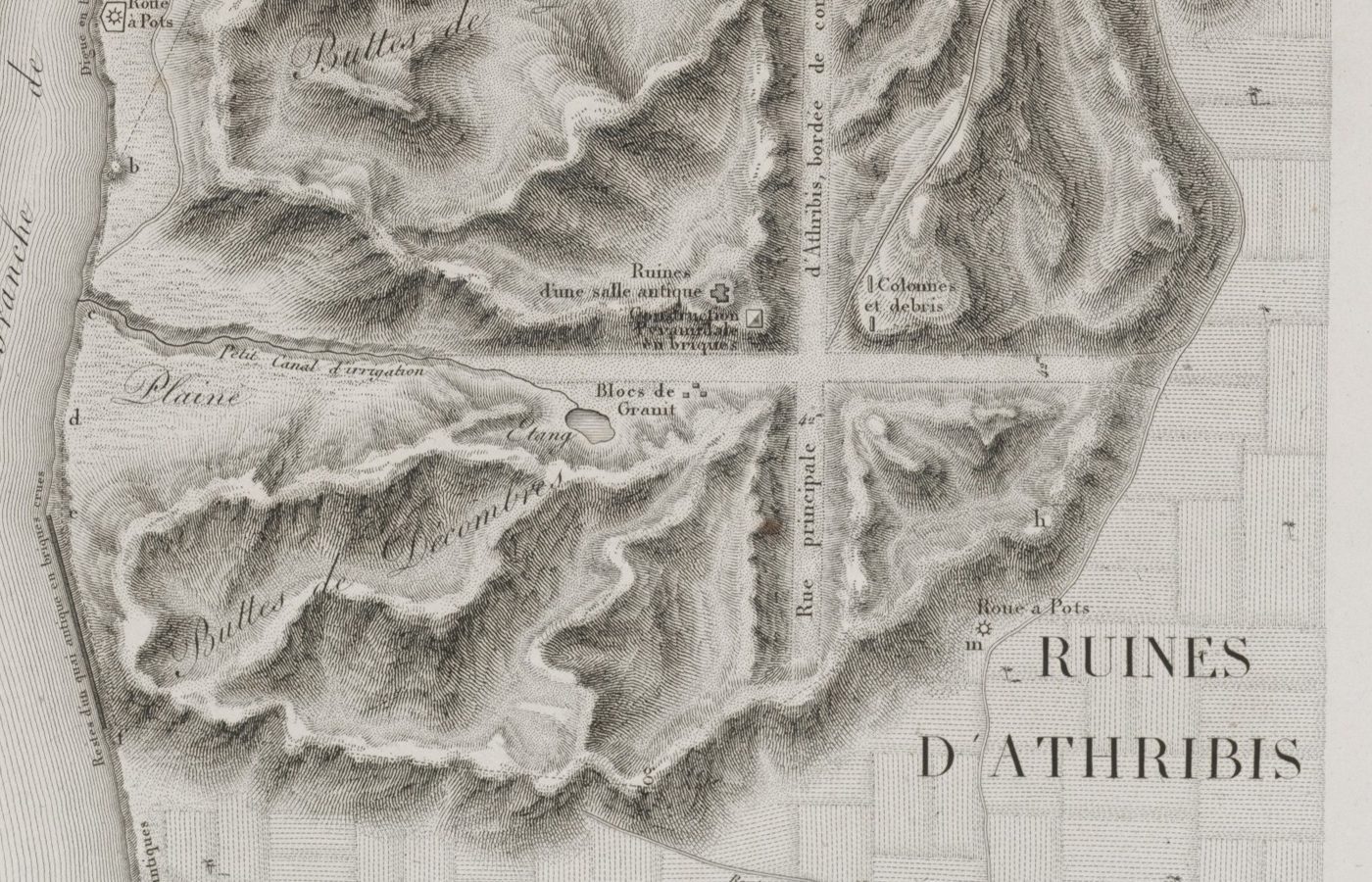Athribis (Tell Atrib), was an ancient city in Lower Egypt, just northeast of Benha on the hill of Kom Sidi Yusuf.
The city was once the capital of the tenth Lower Egyptian nome, reaching its peak in the second half of the first millennium BC during the Ptolemaic and Roman periods as an important religious and administrative centre.
Between 1798–1801, Napoleon Bonaparte campaigned in the Ottoman territories of Egypt and Syria, bringing with him a contingent of scientists and scholars called “savants”.
These scholars, mainly drawn from the Institut de France, included geologists, cartographers, engineers, chemists, mathematicians, artists, and members of the Commission des Sciences et des Arts.
The research compiled by the savants was published in the Description de l’Égypte, a series of publications that aimed to comprehensively catalogue all known aspects of ancient and modern Egypt, as well as its natural history.
One of the sites they briefly documented was Athribis, where artists created a series of plates that depict many of the archaeological features, including an aerial site plan of the city.
At the intersection of two main roads running through the city centre, they briefly noted a small mudstone pyramid, documented in the Description de l’Égypte in Vol 5: Antiquités V : No.27.

Although the dimensions were not recorded, based on the mastabas appearing in the aerial plan, modern scholars estimate that the pyramid measured about 20 metres with an incline of 50° on each side, and reached a height of just under 16 metres.
The pyramid would remain forgotten until 1938, when a team from Liverpool University led by archaeologist, Alan Rowe, rediscovered the monument. Rowe noted that the site had been severely damaged by the activities of the sabbakhin (farmers plundering ancient mud-brick for use as a fertilizer), and that the pyramid was in a heavily damaged state.
Although time constraints meant that the LU team where unable to conduct further investigations on the pyramid, they did note the significance of it being the most northerly pyramid in Egypt and the only known example located in the Nile Delta.
Further attempts to locate the pyramid were conducted in 1993 by Polish Egyptologist, Andrzej Ćwiekm, however, by this time the ruins of Athribis had mostly been built over to construct the modern city of Banha, likely destroying the underlying archaeology and determining the position of the pyramid now virtually impossible.





